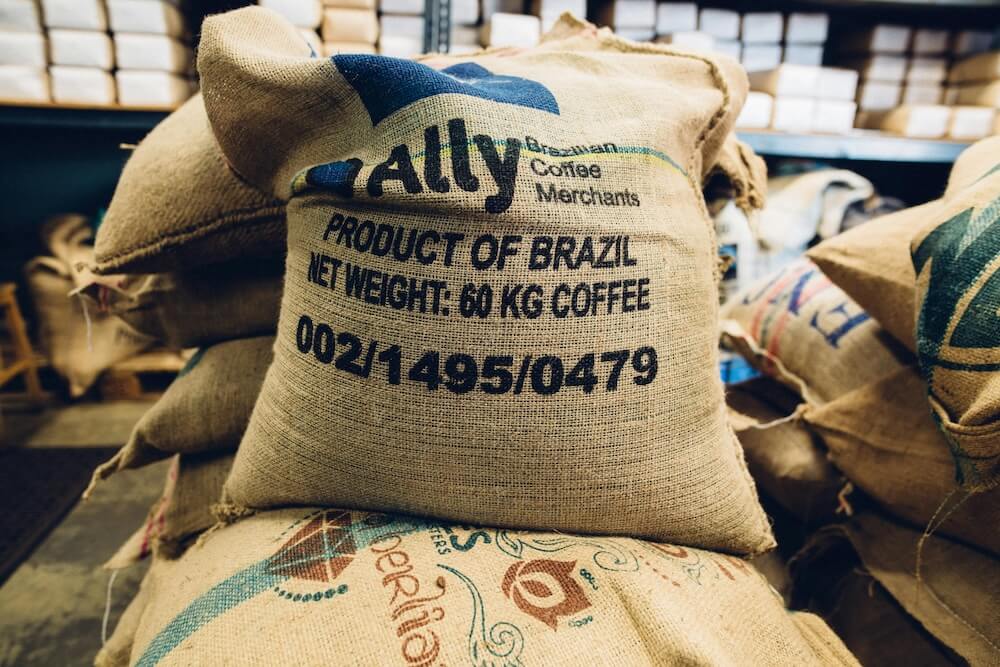Storing coffee long-term can be a challenge. Without proper care, coffee beans lose their flavor, aroma, and overall quality. Whether you’re stocking up on your favorite roast or want to preserve a special batch, understanding the best practices for long-term coffee storage is key to keeping your brews delicious.
To store coffee long-term, keep it in an airtight, opaque container in a cool, dark place. For maximum freshness, avoid exposure to air, moisture, heat, and light—coffee’s biggest enemies.
In this guide, we’ll break down the science of coffee storage, explore common mistakes, and offer practical tips to ensure your coffee stays flavorful for months.
Why Long-Term Coffee Storage Is Important
Coffee is a perishable product. Its quality can degrade over time due to exposure to four main factors: air, moisture, heat, and light. Here’s why proper storage matters:
- Preserving Aroma and Flavor: Coffee’s oils and compounds are sensitive and begin to deteriorate quickly once exposed to oxygen.
- Avoiding Staleness: Improperly stored coffee can become stale, tasting flat or even rancid.
- Extending Shelf Life: Good storage practices can prolong the freshness of coffee, ensuring it remains enjoyable for months.
Best Practices for Storing Coffee Long-Term
1. Use Airtight Containers
Air is coffee’s worst enemy. Once exposed, oxygen causes coffee oils to oxidize, leading to stale flavors. Use airtight containers made from materials like:
- Stainless Steel: Durable and lightproof.
- Glass: Works well if the container is opaque or stored in a dark place.
- Plastic: Food-grade, BPA-free plastic containers can also work, though they may retain odors over time.
Vacuum-sealed containers are an excellent option for creating an oxygen-free environment.
2. Keep Coffee Away from Light
Light exposure, especially from the sun, breaks down the chemical structure of coffee, causing it to lose its quality. To avoid this:
- Store coffee in opaque containers.
- Keep it in a dark pantry or cabinet.
Avoid transparent bags or jars unless they are placed in a shaded area.
3. Control Temperature
Temperature fluctuations can ruin coffee. Aim to store coffee in a cool, stable environment—ideally between 60–70°F (15–21°C). Avoid areas like:
- Near stovetops or ovens.
- In direct sunlight or near windows.
- Inside the refrigerator (more on this later).

4. Protect Against Moisture
Moisture causes coffee to degrade and can even lead to mold growth. Always:
- Store coffee in dry areas.
- Avoid opening the container in humid conditions.
- Never use damp scoops or utensils when handling coffee.
5. Freeze Coffee for Long-Term Storage
Freezing coffee is one of the most effective ways to preserve its freshness for months. However, this method requires careful execution:
- Use Small Portions: Divide coffee into single-use bags or airtight containers. This prevents repeated exposure to air.
- Vacuum Seal for Best Results: Removing air ensures maximum preservation.
- Thaw Gradually: Let frozen coffee reach room temperature before brewing to avoid condensation.
Freezing works well for whole beans, but avoid freezing ground coffee—it’s more susceptible to moisture and flavor loss.
Whole Beans vs. Ground Coffee: What’s Better for Storage?
If you’re planning for long-term storage, whole beans are your best bet. Here’s why:
- Whole Beans Stay Fresh Longer: Grinding exposes more surface area to air, accelerating flavor loss.
- Ground Coffee Degrades Faster: Once ground, coffee loses its peak flavor within minutes to hours, even with proper storage.
For long-term storage, purchase whole beans and grind them as needed.
Common Mistakes to Avoid When Storing Coffee
Even seasoned coffee enthusiasts can make mistakes. Here are some to steer clear of:
1. Storing Coffee in the Fridge
The refrigerator might seem like a good option, but it’s not. Coffee absorbs odors and moisture, which can ruin its flavor.
2. Using Non-Airtight Bags
Leaving coffee in its original packaging (unless resealable) can expose it to air, moisture, and light.
3. Overbuying Coffee
Coffee is best when consumed within a few weeks of roasting. Avoid purchasing more than you can reasonably use in a month unless you’re freezing it.

Signs Your Coffee Has Gone Bad
Wondering if your coffee is past its prime? Here are common indicators:
- Dull Aroma: Fresh coffee should smell rich and aromatic. Stale coffee has a weak or musty scent.
- Flat Taste: Good coffee should have a bold, complex flavor. If it tastes flat or sour, it’s likely gone stale.
- Oily or Clumpy Texture: This could indicate moisture exposure or rancid oils.
FAQs About Long-Term Coffee Storage
1. How Long Can Coffee Be Stored?
- Whole Beans: Up to 6 months with proper storage, or 1–2 years in the freezer.
- Ground Coffee: 1–2 weeks in an airtight container; up to 6 months in the freezer.
- Instant Coffee: 2–20 years depending on packaging, as it’s freeze-dried.
2. Should I Store Coffee in Its Original Bag?
Only if the bag is resealable and has a one-way valve. Otherwise, transfer the coffee to an airtight container.
3. Is Freezing Coffee Really Effective?
Yes, freezing coffee is highly effective for long-term storage. However, ensure it’s sealed properly to prevent freezer burn and moisture absorption.
Conclusion: Preserve Your Coffee Like a Pro
Long-term coffee storage requires careful planning and execution, but it’s worth the effort to enjoy fresh, flavorful coffee over time. By following these best practices—using airtight containers, keeping coffee away from light and moisture, and freezing when necessary—you can savor every cup as if it were freshly roasted.
Remember, the key to great coffee isn’t just how you brew it—it’s how you store it. Take the time to protect your beans, and your morning ritual will thank you.







